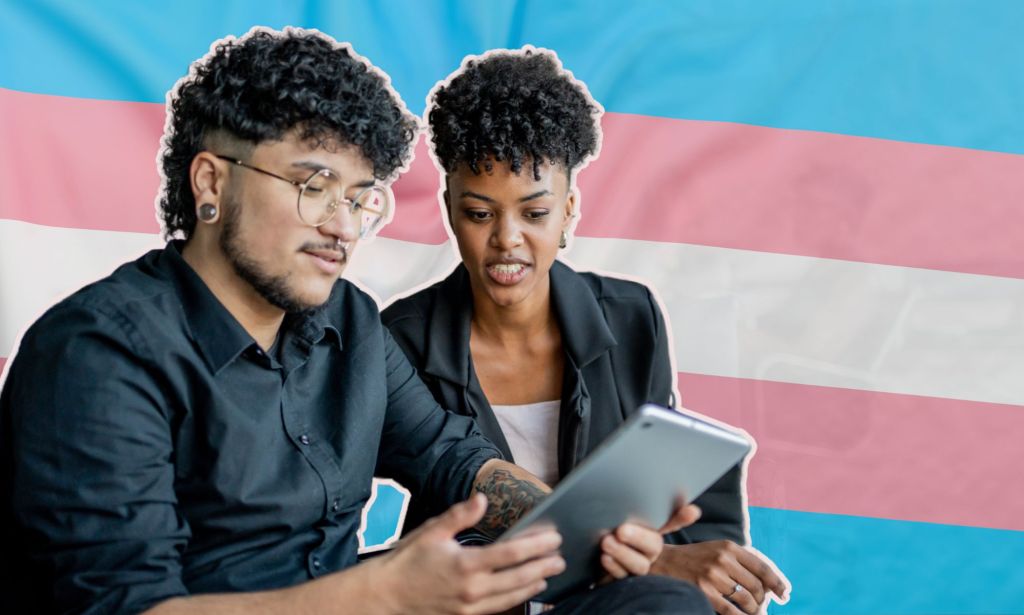Here’s what all trans people need to know about their workplace rights

All trans employees should know their rights in the workplace. (Getty Images/PinkNews)
All trans employees should know their rights in the workplace. (Getty Images/PinkNews)
Chris Hadrill, a partner at Redmans, a UK-based specialist employment law firm, has outlined the rights that trans and non-binary employees have in the workplace.
In recent years, numerous studies have shown how transgender employees experience, and deal with, discrimination at work. A 2018 Stonewall report found half of trans and non-binary individuals disguise or hide that they are part of the LGBTQ+ community for fear of discrimination in the “office”.
It’s important for trans employees to be aware of what protections they have against discriminatory treatment, and we have set out a brief guide on what you need to know.

Your rights as a trans employee: protected characteristics
A protected characteristic is any attribute that prevents a person from being discriminated against under the 2010 Equality Act.
A person “proposing to undergo, is undergoing or has undergone” a gender-reassignment process (or part of a one) is considered to have a protected characteristic. Similarly, a person who identifies as transsexual will be considered to have this protection.
If the person has started the process but decides to stop, they are still considered to have this protected characteristic.
Additionally, there is no requirement that a person must notify their employer of their decision to undergo the process to be protected under the law.
How does the Equality Act protect trans employees?
Under the legislation, employees, workers, contract workers, partners, office holders or prospective employees are protected from direct and indirect discrimination as well as from harassment and victimisation.
Direct discrimination
A trans employee can make a claim for direct discrimination if they are being treated less favourably than a non-trans employee (section 13 of the act).
Example: you work as “front of house” in a restaurant. You inform your employer that you will undergo gender reassignment and your employer chooses to move you from your current role to a less prominent, non-client-facing, position. This would be direct gender reassignment discrimination.
Similarly, a trans employee cannot be treated less favourably when absent because of gender reassignment. For example, if a person needs to take time off to attend a gender identity clinic as part of their transition process, the employer cannot pay them less than he would a non-trans person who was off sick.

Indirect discrimination
If a workplace “provision, criteria or practice” puts a trans employee at a particular disadvantage, but does not put a non-trans person at a disadvantage, this amounts to indirect discrimination (section 19).
Example: a manager implements a policy for all employees to show their birth certificates along with their passports for extra identity checks. This would be applied to everyone but could put a trans employee at a particular disadvantage compared to a non-trans employee (because they may be forced to disclose their transition, and might not wish to do so).
Harassment
Harassment occurs when a person experiences unwanted conduct from a colleague (irrespective of seniority) that’s related to the protected characteristic, with this action causing the trans employee to feel their dignity has been violated, or that an intimidating, hostile, degrading, humiliating or offensive workplace environment has been created. This falls under section 26(1) of the Equality Act.
The act also protects partners and close friends of trans individuals with protected characteristics. This means a person whose partner or close family member is undergoing, or is wrongly perceived to have undergone gender reassignment, is also protected.
Example: a person who has undergone male-to-female gender reassignment is having social drinks with colleagues, but one keeps referring to her as “he” or “him” despite her complaining about this.

Victimisation
Victimisation occurs when a person is treated unfairly for taking any action under the Equality Act such as complaining about discrimination towards someone else or supporting them in their claim (section 27). This ensures that when an employee raises a grievance or gives evidence to support a colleague’s discrimination allegations, they are protected.
If they suffer from any detriment such as a dismissal because of raising, or intending to raise, or giving evidence in support of such allegations, they will be entitled to bring a claim for victimisation.
Example: the person who has undergone male-to-female gender reassignment in the example above makes a complaint to their line manager, saying they have been harassed by a colleague, but their manager tells them he won’t be taking any action. This could amount to victimisation.
What should a trans person do if they’ve been discriminated against at work?
There are several options available to trans employees who are experiencing discrimination. First, they can raise a formal grievance with their employer to seek an amicable resolution.
ACAS provides some useful guidance on this, and the resolution to such an approach could be anything from requesting mediation, to workplace training or discussing an exit package.
Secondly, if an internal resolution cannot be reached then the employee or worker can pursue a claim at an employment tribunal (this applies even if their employment continues in a claim for discrimination, but be aware of the strict and short three-month deadline to pursue a claim).
For further information on your rights relating to discrimination, the Equality and Human Rights Commission website contains useful guidance.
Share your thoughts! Let us know in the comments below, and remember to keep the conversation respectful.
